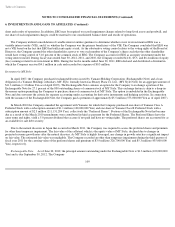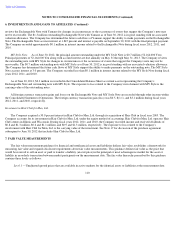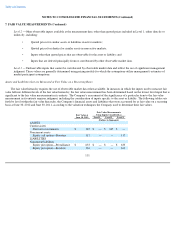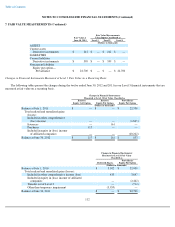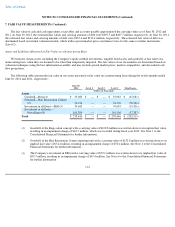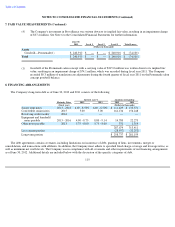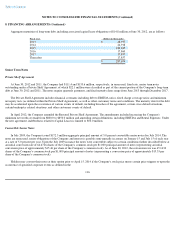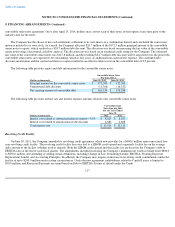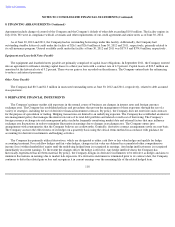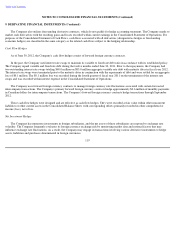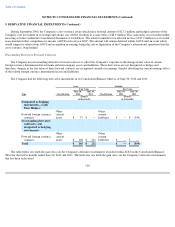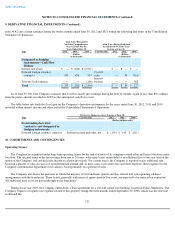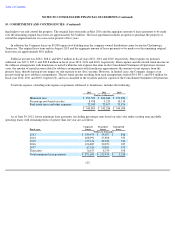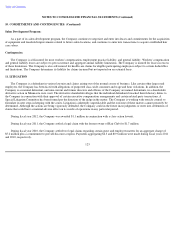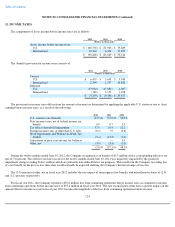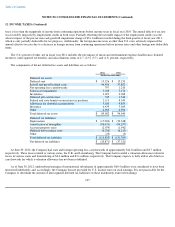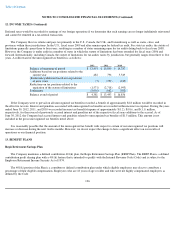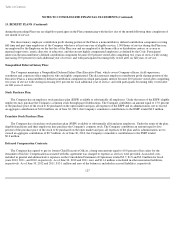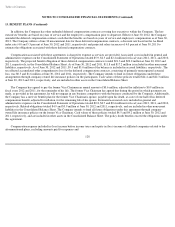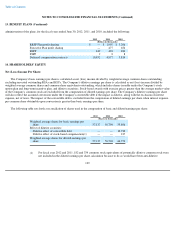Supercuts 2012 Annual Report Download - page 122
Download and view the complete annual report
Please find page 122 of the 2012 Supercuts annual report below. You can navigate through the pages in the report by either clicking on the pages listed below, or by using the keyword search tool below to find specific information within the annual report.
Table of Contents
NOTES TO CONSOLIDATED FINANCIAL STATEMENTS (Continued)
9. DERIVATIVE FINANCIAL INSTRUMENTS (Continued)
The Company also utilizes freestanding derivative contracts, which do not qualify for hedge accounting treatment. The Company marks to
market such derivatives with the resulting gains and losses recorded within current earnings in the Consolidated Statement of Operations. For
purposes of the Consolidated Statement of Cash Flows, cash flows associated with all derivatives (designated as hedges or freestanding
economic hedges) are classified in the same category as the related cash flows subject to the hedging relationship.
Cash Flow Hedges
As of June 30, 2012, the Company's cash flow hedges consist of forward foreign currency contracts.
In the past, the Company used interest rate swaps to maintain its variable to fixed rate debt ratio in accordance with its established policy.
The Company repaid variable and fixed rate debt during the twelve months ended June 30, 2011. Prior to the repayments, the Company had
two outstanding interest rate swaps totaling $40.0 million on $85.0 million aggregate variable rate debt with maturity dates in fiscal year 2012.
The interest rate swaps were terminated prior to the maturity dates in conjunction with the repayments of debt and were settled for an aggregate
loss of $0.1 million. The $0.1 million loss was recorded during the fourth quarter of fiscal year 2011 on the termination of the interest rate
swaps and was recorded within interest expense in the Consolidated Statement of Operations.
The Company uses forward foreign currency contracts to manage foreign currency rate fluctuations associated with certain forecasted
intercompany transactions. The Company's primary forward foreign currency contracts hedge approximately $0.6 million of monthly payments
in Canadian dollars for intercompany transactions. The Company's forward foreign currency contracts hedge transactions through September
2012.
These cash flow hedges were designed and are effective as cash flow hedges. They were recorded at fair value within other noncurrent
liabilities or other current assets in the Consolidated Balance Sheet, with corresponding offsets primarily recorded in other comprehensive
income (loss), net of tax.
Net Investment Hedges
The Company has numerous investments in foreign subsidiaries, and the net assets of these subsidiaries are exposed to exchange rate
volatility. The Company frequently evaluates its foreign currency exchange risk by monitoring market data and external factors that may
influence exchange rate fluctuations. As a result, the Company may engage in transactions involving various derivative instruments to hedge
assets, liabilities and purchases denominated in foreign currencies.
119


